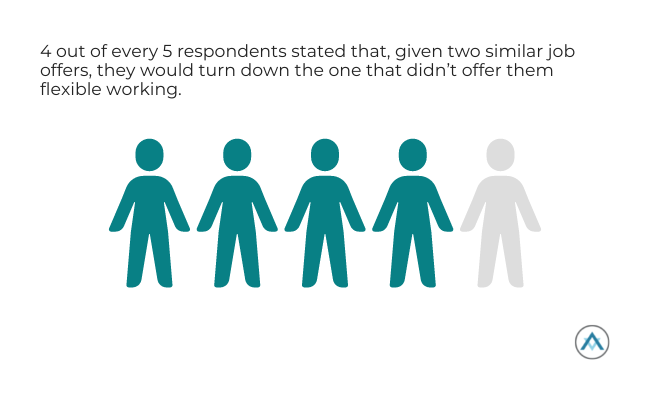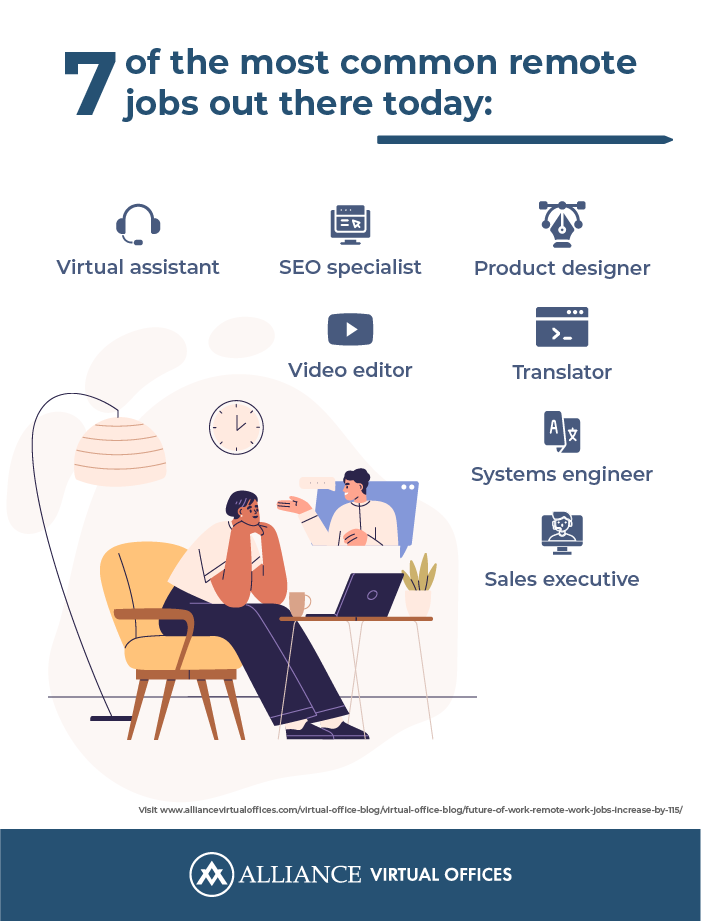The way we work is changing. The pandemic created the largest remote work experiment the world has ever seen, leading to a great shift in working practices.
Today, it’s clear that the work landscape has changed permanently.
U.S. job search data on Glassdoor revealed that searches for remote jobs in the U.S. grew by 360 percent from June 2019 to June 2021.
This suggests that, even though widespread vaccinations and safer environments mean employees can return to the office, not everybody wants to – and the appetite for remote work is strengthening.
“Even as the public health situation improved, job seeker interest in remote positions has grown and seems unlikely to return to pre-pandemic levels, especially considering the steady growth in access to work-from-home even before the pandemic began.” – Glassdoor
But remote work isn’t a new phenomenon.
Historical data from Glassdoor shows that access to home-based work has doubled over the past decade.
In March 2020, prior to the pandemic, 54 percent of workers reported having access to work from home benefits in the U.S., compared with only 28 percent of workers who were permitted to work from home in 2011.
Going back a little further, in another report, the number of people telecommuting in the U.S. increased by 115 percent between 2005 and 2015 (2017 State of Telecommuting in the U.S. Employee Workforce).
Much of this was driven by the widespread availability of Wi-Fi, mobile devices, and an increase in roles that didn’t require a centralized office.
The ‘gig’ or freelance economy was growing steadily alongside these technological advances. At the same time, the Millennial workforce was expanding – an age group that typically values work flexibility. Millennials now make up the largest portion of the world’s workforce, leading to the rise of the so-called alternative workforce.
- Increase in home-based jobs
- Best remote jobs and how to find them
- What you’ll need for your work from home job
- Why use a virtual office?
But even though companies were beginning to accept remote work, it wasn’t until the pandemic forced millions of people to work remotely that more firms experienced these benefits for themselves.
What benefits, exactly?
Productivity, for one. 85% of businesses confirm that productivity has increased in their company because of greater flexibility (FlexJobs and Global Workplace Analytics, 2020).
Importantly, remote work has been found to improve diversity and equity.
That’s partly because the anonymity offered by remote work provides safety and mental well-being for minorities by shielding them from discrimination. Also, allowing people to work from home can help break the glass ceiling; one study found that women are 32% less likely to leave their job if they have access to remote work, as it allows them greater flexibility for childcare.
This is linked with employee happiness, which is another clear benefit of remote work. 4 out of every 5 respondents stated that, given two similar job offers, they would turn down the one that didn’t offer them flexible working.
This is evident in separate research that claims 65% of workers would take a pay cut to work from home.
However, working remotely doesn’t necessarily mean working from home.
This is true in many cases, but some companies and solopreneurs also use virtual offices in order to enhance employee productivity and improve client perception.
What is a virtual office? Alliance Virtual Office’s definition of a virtual office is as follows:
“A virtual office is a combination of people, a place, technologies, and processes that come together to help businesses and individuals work more efficiently, often in a remote way.”
Virtual office space members have access to a business address, mail handling services, a business telephone number and a range of additional features, from access to bookable conference rooms and hot desks to Live Receptionist support.
Increase in home-based jobs
Many people hear terms like “remote worker” and “digital nomad” and automatically think of self-employed freelancers. However, since the pandemic, many types of workers now fall into this category, including full-time employees.
In fact, evidence from the aforementioned State of Telecommuting report reveals that many established companies are taking a more flexible approach by allowing their employees to work remotely, some or all of the time.
Prior to the pandemic, a two-year study by Stanford University showed a productivity boost among the test group’s telecommuters of the equivalent of an extra full day’s work. Employee attrition decreased by 50% and the remote group also had fewer sick days compared with those who worked in the office full-time.
One potential problem associated with working from home however is the inability to disconnect and to separate home life from work life. Coworking spaces and virtual offices (that offer hot desking) are becoming increasingly popular for this reason: they enable their members to work in a more productive environment surrounded by other people in a similar position.
Best remote jobs and how to find them
As we’ve seen from Glassdoor’s research, remote job searches are on the rise.
Certain types of jobs have always lent themselves to remote working, particularly ‘creative’ digital roles. Many copywriters, graphic designers, and website developers work as employees remotely or as self-employed freelancers for multiple companies.
That said, you’ll find remote jobs across a range of industries. Even in fields like tutoring (Skype lessons are becoming more popular, for instance).
Here are 7 of the most common remote jobs out there today:
- Virtual assistant
- SEO specialist
- Product designer
- Video editor
- Translator
- Systems engineer
- Sales executive
Becoming a ‘remote employee’ has a number of benefits and doesn’t come with the risks attached to self-employment like periods of little or no work, business expenses, saving for tax, etc. It’s also a great way to test the water if you’re thinking about starting your own business down the line because you have to be self-motivated to succeed in a remote role.
There are a number of websites you can use to find legitimate home-based jobs. Some specialize in specific industries and others cover a range of sectors. A popular one is remote.co. You can use it to search for open remote positions and find out more about the ins and out of remote working on their blog.
Virtual Office Seattle
Starting at $59.99 /mo (view all)
Downtown Seattle ● California Avenue Office Center
Virtual Office San Jose
Starting at $69 /mo (view all)
Silicon Valley Center ● Silicon Valley Business Center
What you’ll need for your work from home job
Setting up your work from home space is relatively easy, especially if the type of job you do doesn’t require specialist technology. If you’re working as a remote employee, your employer should cover the cost of, or provide you with, the technology you need, such as a laptop or VoIP system if your role involves speaking on the phone.
You’ll also need reliable internet access and space for a desk. Try to create a work environment by using a spare room if you have one. Working from your living room may be sufficient, providing you can work comfortably and limit any noise or distractions (for example, from pets or family members). Using a folding screen can help create separation.
Some people find working remotely from home a lonely affair, so you might consider joining social groups through sites like Meetup.com.
Another option would be to invest in a coworking space or a virtual office with access to hot desks.
Why use a virtual office?
Research suggests that 87% of companies will change their real estate strategy to adapt to remote work within the next year.
For some, this will mean keeping a centralized office and enabling hybrid work. Others will switch to a fully remote setup and utilize on-demand meeting rooms and flexible workspace as needed.
This is where a virtual office comes in.
Businesses can use the address as their main registered office and utilize onsite workspace or meeting space only when they need it. They can also use it as satellite offices for staff who prefer to work away from home from time to time.
After the world’s biggest remote work experiment, some businesses will ‘go back to normal’ – but many others will switch to a location-independent model that promotes far greater cost-efficiency and flexibility.
It also creates an environment of trust that empowers workers and enables better work-life balance, opening the door to happier, more productive people.
There’s never been a better time to make the move into remote work. As companies continue to embrace more flexible ways of working, the number of remote job opportunities look set to continue growing.












